Busy pet parents need quick and thoughtful meals. We offer Vet-Approved Homemade Dog Food Recipes perfect for real life. They take 30 minutes and use whole, human-grade ingredients. They’re designed following AKC AAFCO guidelines for balanced nutrition.
The main recipe includes coconut oil, ground turkey, zucchini, spinach, carrots, turmeric, an egg, and cooked rice. It’s a turkey veggie mix that cooks in about 30 minutes. This dog food is simple to make, easy to store, and good for your dog’s tummy.
Dog owners love the results, like less itching and better digestion. This switch from store-bought to homemade meals is easy with ingredients from H‑E‑B. But remember, each dog is unique. Always check with a vet, especially when making big diet changes or adding supplements.
The following recipes are quick and easy for weeknight cooking. They use simple ingredients like common proteins and dog-safe veggies. You’ll find instructions, tips for freezing, and advice on serving. These Vet-Approved Homemade Dog Food Recipes are meant to make feeding your dog homemade food simple and beneficial.
Why Make Homemade Dog Food in 30 Minutes
Making dog food in 30 minutes gives owners control. You can notice the difference between homemade meals and kibble. Just use a pan, some lean meat, and quick-cook carbs to serve a fresh meal exactly when your dog is hungry.
Benefits over processed kibble for skin, coat, and digestion
Real food is better for your dog’s skin and coat. People often see fewer itches and improved digestion with it. One person even noticed improvements after switching from store-bought food that smelled bad to homemade meals and oatmeal baths.
Lean meats and veggies like zucchini and carrots make meals easy on the stomach. Clean & Delicious explains that this method helps with digestion. It also keeps fat levels ideal for your dog’s health.
Peace of mind from whole, human-grade ingredients
Choosing human-grade ingredients for dog food adds trust. Owners can pick fresh items safe for the whole family. This approach eases concerns for dogs with sensitive issues or picky eaters.
Know Better for Dogs says high-quality meats, including buffalo and rabbit, are great for dogs. Simple ingredients are better than lengthy lists for mealtime peace.
Time-saving batch cooking and freezer-friendly prep
Cooking meals in batches saves time during the week. Just triple a recipe, cool it, and store it properly. Keep it in the fridge for a week or in freezer packs for up to three months.
Avoid using the microwave too often and store leftovers quickly. This keeps the food tasting good. Plus, it fulfills the 30-minute meal promise.
Transitioning gradually and monitoring weight and energy
Switching to homemade food should be done slowly. Mix a little into your dog’s current food, as Dani Spies suggests. Keep an eye on how your dog reacts.
Pay attention to your dog’s weight and meal excitement. Know Better for Dogs has portion guides, but consider your dog’s needs. A vet can offer advice for a successful switch.
Foundations of Balanced Canine Nutrition at Home
Making meals at home for your dog can work if you follow the right nutrition rules. A mix of turkey, vegetables, and rice can be a good start. It should include protein, fats, carbs, and essential vitamins. You can use quality human foods and tweak the recipe with expert advice to make it a regular part of your dog’s diet.
Core nutrients: protein, healthy fats, carbohydrates, vitamins, minerals
Begin with lean protein for muscle and brain health. Add easy-to-digest carbs like rice for energy. Include fats and omega-3 from fish or its oil for overall well-being.
Complete the meal with eggs and colorful veggies. They provide the vitamins and minerals your dog needs. This way, every meal is both nutritious and delicious.
AKC/AAFCO guidance and why a vet consult matters
Using AKC or AAFCO dog nutrition guidelines helps keep meals balanced. A vet check-up is crucial to tailor the diet to your dog’s specific health needs. It ensures the diet meets all requirements, especially for minerals and calcium essential for bone and heart health. Catching and fixing any gaps early is important.
When and why to add supplements (calcium, essential fatty acids, taurine)
Over time, some homemade diets might need extra nutrients. People often add a complete premix or specific supplements like calcium, omega-3, and taurine. These additions ensure the diet supports your dog’s growth, muscle, skin, and coat health. They keep the nutritional value consistent every time you prepare a meal.
Serving size cues by weight, age, and activity level
Portion sizes should be based on your dog’s size, age, and how active they are. Start with these guidelines: half a cup daily for small dogs about 10–12 pounds. Medium dogs at 20–25 pounds might need about 1 cup, larger dogs at 40–50 pounds around 2 cups, and very large dogs near 100 pounds roughly 4 cups. Adjust amounts for young puppies, older dogs, and those that are very active.
Vet-Approved Homemade Dog Food Recipes
These recipes are great for pet owners who want to cook at home. They focus on lean protein and include dog-safe veggies. The goal is to make dog food in 30 minutes that’s tasty and healthy.
Quick turkey, veggie, and rice skillet (30 minutes start to finish)
This recipe is quick and easy to clean up after. Start by heating 1 tablespoon of coconut oil in a large pan. Then cook 1 pound of ground turkey for about 10 minutes.
Next, add shredded zucchini, chopped baby spinach, and shredded carrots. Sprinkle in 1/2 teaspoon turmeric for extra health benefits. Cook everything for 5–7 minutes until it’s soft.
Finally, mix in 3 cups of cooked brown rice. Using frozen rice cuts down on prep time. Let it cool before feeding your dog. This recipe makes 6–7 cups of dog food, perfect for a weeknight meal.
Lean protein swaps: beef, lamb, poultry, venison, and approved exotics
Changing up the protein helps keep your dog’s diet interesting. You can use beef heart, lamb, chicken, or venison. Make sure the pieces are lean.
Other meats like buffalo, elk, or rabbit can be good choices too. Just make sure they’re fresh and low in fat. Always measure to keep your dog’s diet consistent.
Dog-safe vegetables that add fiber and antioxidants
Follow a dog-safe vegetable list for the best choices. Options include butternut squash, pumpkin, and carrots. Also, zucchini, beets, and cauliflower are good.
It’s best to steam or puree these veggies for easy digestion. Vary the colors for different nutrients. However, avoid onions and green tomatoes.
Flavor and function add-ins: coconut oil, egg, turmeric
Adding extra ingredients can boost the meal’s nutrition. Coconut oil provides fats, while an egg adds protein and vitamins.
Turmeric, used in moderation, offers antioxidants. Include these in your dog’s meals to make them more nutritious and flavorful.
Five Easy, 30-Minute Recipe Ideas
Try these quick dog food recipes. They’re easy to make on a busy weeknight. Each recipe is a hit for dog owners who want healthy, homemade meals. Remember to keep water bowls full and let the food cool before serving.
Ground turkey + zucchini + spinach + carrots + egg + brown rice: This recipe makes around 6–7 cups of food. It has about 240 kcal per cup. Add the egg at the end for a smooth texture. You can also freeze this meal for later.
Chicken thigh + butternut squash + broccoli (lightly steamed) + turmeric: Use boneless, skinless chicken thighs for this moist dish. Cook with a bit of coconut oil. Add steamed squash and broccoli with a dash of turmeric. You can serve it with or without rice, based on your vet’s advice.
Lean beef + sweet potato + cauliflower + egg yolk finish: Start by browning lean beef. Then, mix in steamed sweet potato and finely chopped cauliflower. Stir in an egg yolk for added richness. Include a spoonful of rice if your dog needs it for digestion.
Lamb + pumpkin + carrots + parsley with rice or rice-free variation: This meal is full of soft fiber and fresh flavor. Cook lamb, then add plain canned pumpkin and shredded carrots. Finish with parsley. Choose rice based on your dog’s needs, or follow a vet-approved mix.
Venison + yams + Brussels sprouts (chopped/steamed) + coconut oil: For venison dog food, start with a quick sear in coconut oil. Then add yams and Brussels sprouts for fiber. Let it cool before you serve.
Portioning tips and quick-cook methods for stovetop skillets: To save time, use pre-chopped veggies and pre-cooked rice. Cook meat on medium-high, then add veggies. Use Know Better for Dogs to measure portions right – about 1/2 cup for small dogs up to 4 cups for large ones. Adjust based on your dog’s needs. Batch cooking makes meal prep easy.
Safety Do’s and Don’ts for Homemade Dog Meals
Begin by making dog food safety your starting point. Always consult with an AAFCO-approved vet before making significant meal changes. This ensures your homemade meals are up to AKC/AAFCO standards. Use only fresh, human-grade meats containing 8–15% fat. Make sure ground meats are cooked to safe temperatures and vegetables are either lightly steamed or finely chopped for easier digestion.
Maintain a simple “do” list for safely cooking dog meals: cook in batches, cool quickly, and clearly mark the dates. Organize how you’ll store and freeze the food in sealed containers. Remember, refrigerate up to one week and freeze for no more than three months. Always thaw food in the refrigerator or in a leak-proof bag in lukewarm water. Avoid using the microwave too often and always remove any food left uneaten after 30 minutes.
Be aware of the “don’t” list, which includes foods harmful to dogs: unaged garlic, onions, shallots, chives, chocolate, grapes, raisins, avocado, soy sauce, cooked bones, and certain nightshades like green tomatoes, potatoes, and bell peppers. It’s best to limit kale and only serve cooked green beans. Steer clear from giving dogs raw fish regularly; reports such as in The Domestic Dog by Katherine Houpt, Harold Hintz, and Paul Shepherd from Cambridge University Press, have shown it can lead to thiamine deficiency in dogs.
When switching to homemade dog food, mix it with the current kibble gradually over a few days. Monitor their weight, poop, energy levels, and hunger, adjusting food amounts with your vet’s help. Start by portioning food based on size: 1/2 cup daily for 10–12 lb dogs, 1 cup for 20–25 lb dogs, 2 cups for 40–50 lb dogs, and 4 cups for those around 100 lb. Then, get specifics from your vet.
Avoid making nutrition guesses for long-term diet balance. Things like calcium, taurine, and essential fatty acids are important. Using a complete premix, such as Know Better for Dogs, ensures your pet gets necessary vitamins and minerals with either raw or cooked meat. Always keep the food labels and note batches for consistent dog food safety.
Conclusion
In just 30 minutes, you can make healthy dog food at home. It’s easy and tastes great. Start with a turkey–vegetable–rice mix from Clean & Delicious. Then, make safe changes using tips from Know Better for Dogs. Use lean meats, safe veggies, and add things like coconut oil, egg, and turmeric. This makes a balanced diet for your dog that’s good for their skin, coat, and belly. Plus, it makes mealtime fun.
Being consistent is key. Stick to AKC and AAFCO guidelines and ask a vet for advice. If you’re feeding your dog this way for a while, add supplements or a trusted premix. This makes sure your dog gets enough calcium, fatty acids, taurine, vitamins, and minerals. Adjust the food amount for your dog’s size, age, and how active they are. Then, see how they look and act to know if it’s working. Many people find their dogs itch less and enjoy meals more with vet-approved recipes and top-notch ingredients.
For a busy week, prepare dog meals in batches. You can keep these in the fridge for up to a week or freeze for three months. Thaw them in the fridge to keep meal planning and storage easy. Doing a bit of prep on Sunday helps keep feeding time stress-free all week.
It’s clear that fresh, consistent food is doable in everyday life. With some tested recipes, careful portioning, and simple planning, you can give your dog meals that are good for them and make them happy. That’s what dog meal planning and storage is all about. It’s about taking easy steps to make sure your dog stays healthy while keeping your kitchen routine simple.























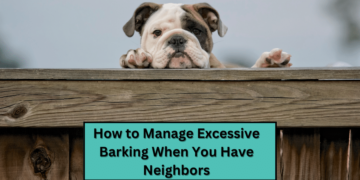


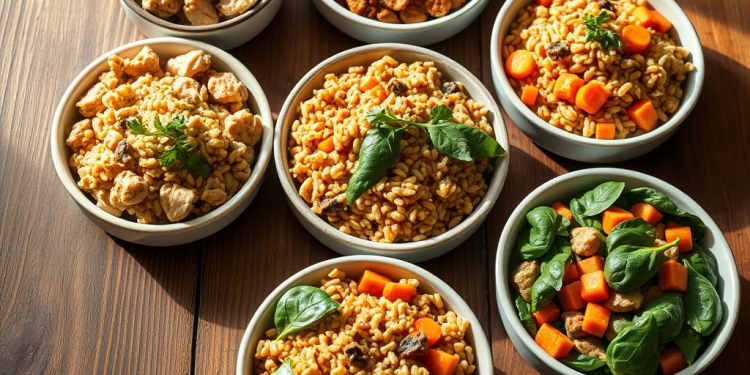







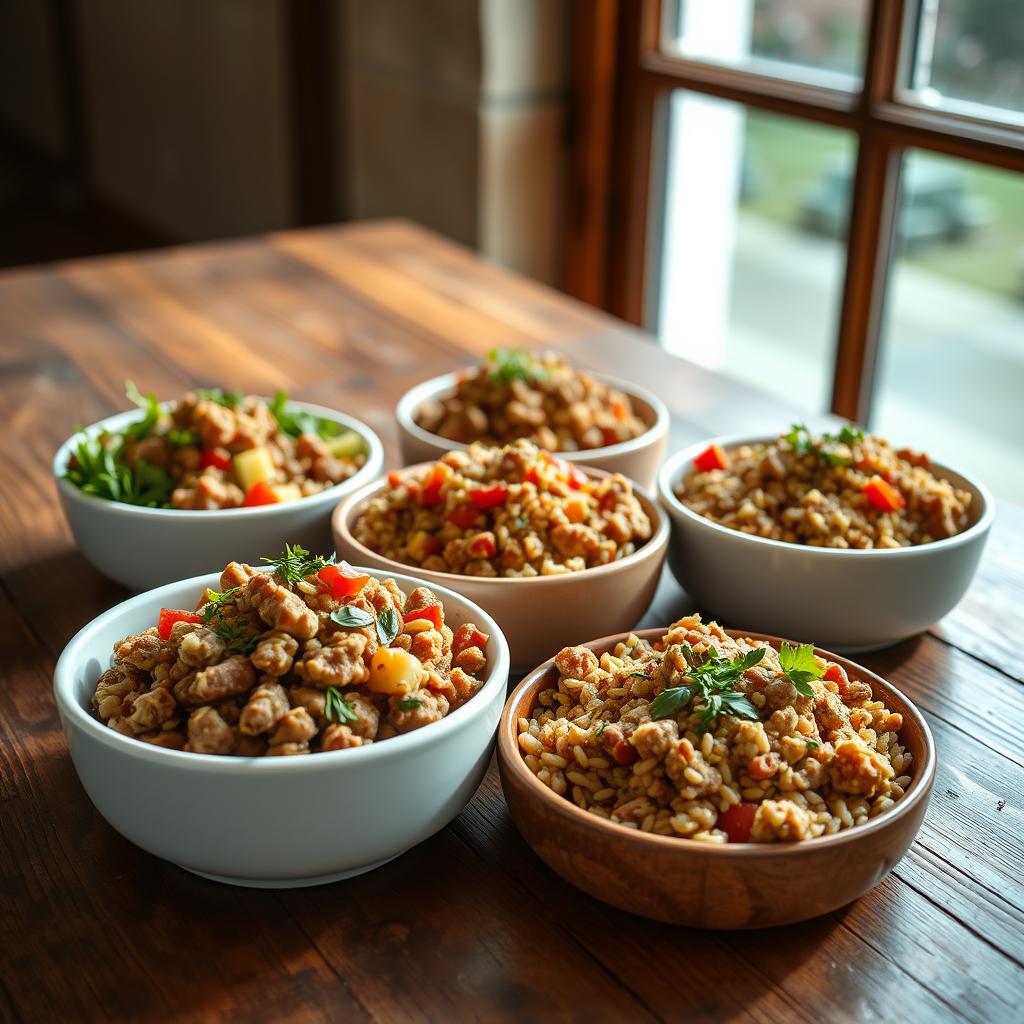
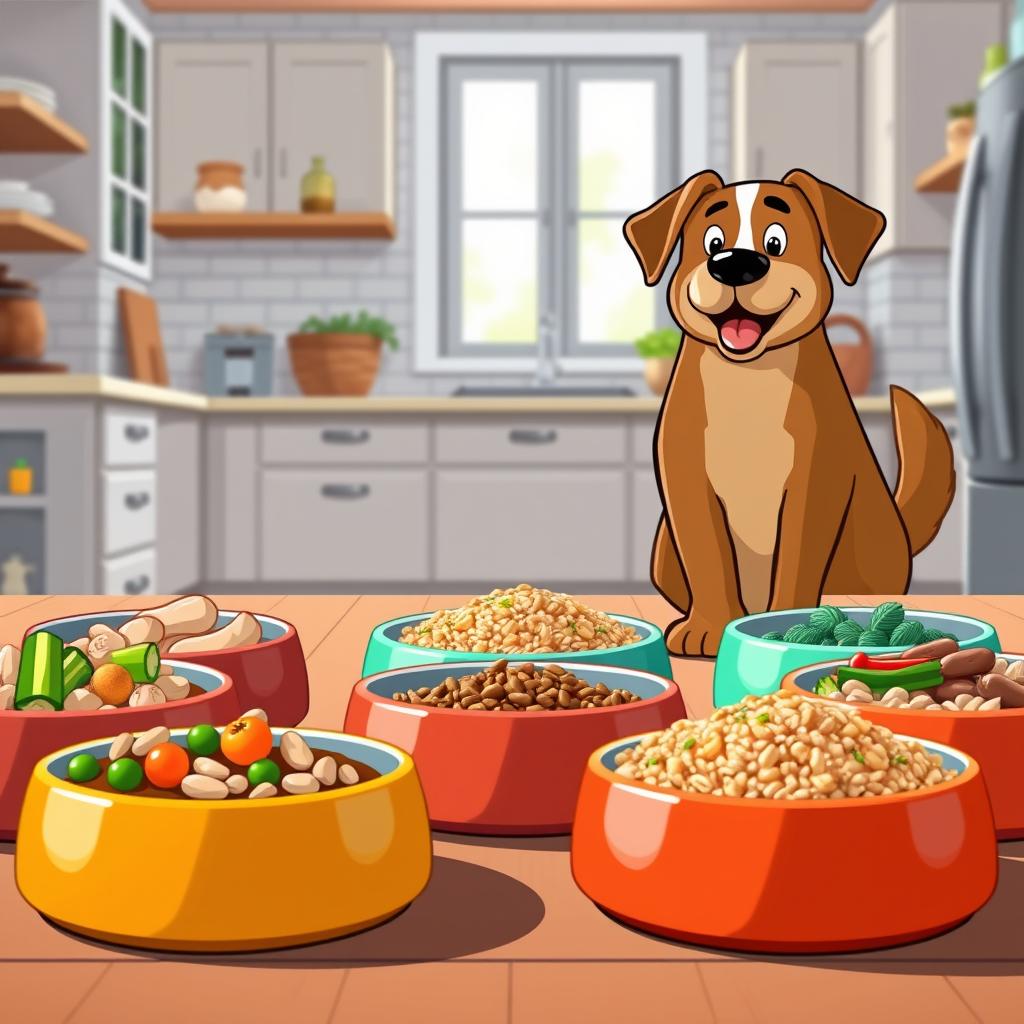

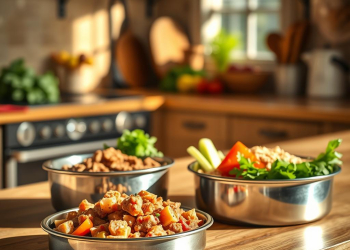
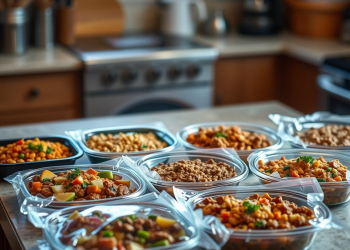
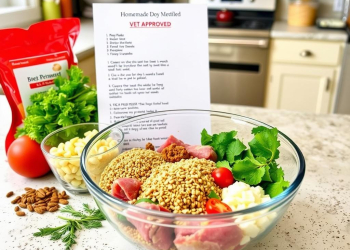
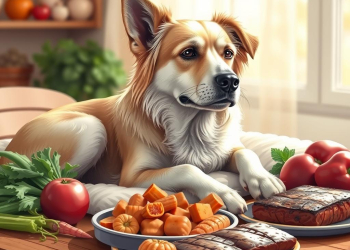










Discussion about this post